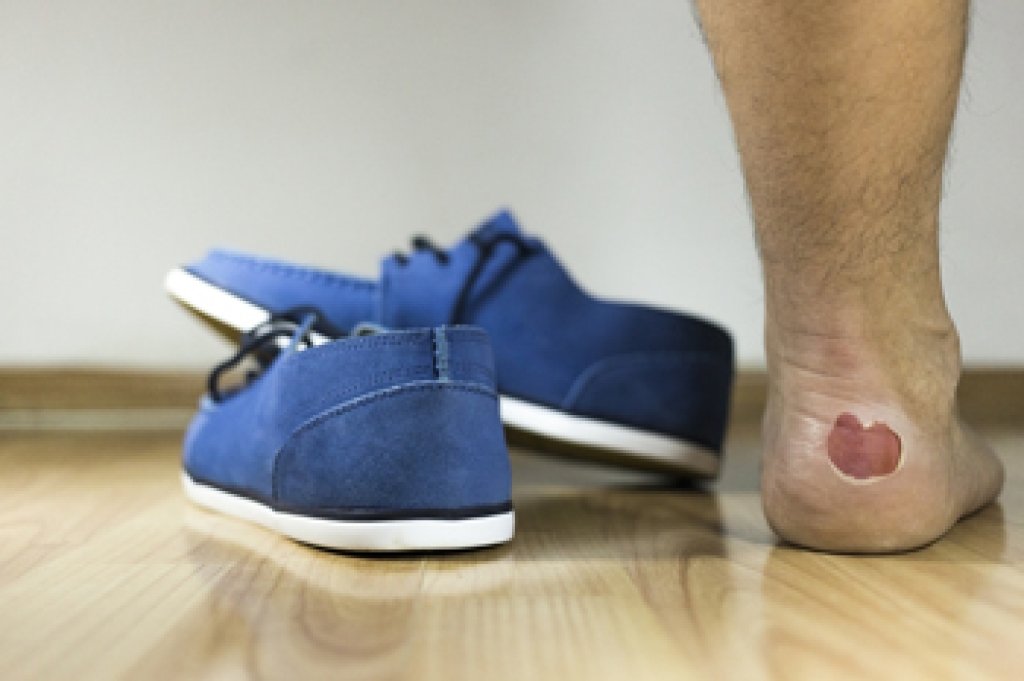
A small area of skin on the foot which is filled with protective liquid is defined as a blister. It is the body’s natural defense in producing new skin, which replaces the skin that has been damaged. This happens as a result of excess friction that is often caused by wearing shoes and socks that do not fit correctly. The skin will become reddened, and this is the first sign a blister is developing. There may be medical reasons why blisters on the feet can occur. These can consist of having eczema, psoriasis, or they may be part of an allergic reaction to specific chemicals or to an insect bite. Additionally, people who enjoy running may find that they have developed blisters, which can happen from excessive foot moisture. This can be prevented by wearing socks and shoes that are made of materials that can absorb moisture. Using a foot antiperspirant may help to reduce or eliminate sweating. It is beneficial to keep the blister covered until it drains naturally when new skin is formed. It is also wise to consult with a podiatrist if you have blisters on your feet, who can help with effective treatment and prevention methods.
Blisters are prone to making everyday activities extremely uncomfortable. If your feet are hurting, contact one of our podiatrists of Community Foot Specialists. Our doctors can provide the care you need to keep you pain-free and on your feet.
Foot Blisters
Foot blisters develop as a result of constantly wearing tight or ill-fitting footwear. This happens due to the constant rubbing from the shoe, which can often lead to pain.
What Are Foot Blisters?
A foot blister is a small fluid-filled pocket that forms on the upper-most layer of the skin. Blisters are filled with clear fluid and can lead to blood drainage or pus if the area becomes infected.
How Do Blisters Form?
Blisters on the feet are often the result of constant friction of skin and material, usually by shoe rubbing. Walking in sandals, boots, or shoes that don’t fit properly for long periods of time can result in a blister. Having consistent foot moisture and humidity can easily lead to blister formation.
Prevention & Treatment
It is important to properly care for the affected area in order to prevent infection and ease the pain. Do not lance the blister and use a Band-Aid to provide pain relief. Also, be sure to keep your feet dry and wear proper fitting shoes. If you see blood or pus in a blister, seek assistance from a podiatrist.
If you have any questions, please feel free to contact our offices located in Beavercreek, Dayton, and Vandalia, OH . We offer the newest diagnostic and treatment technologies for all your foot care needs.
